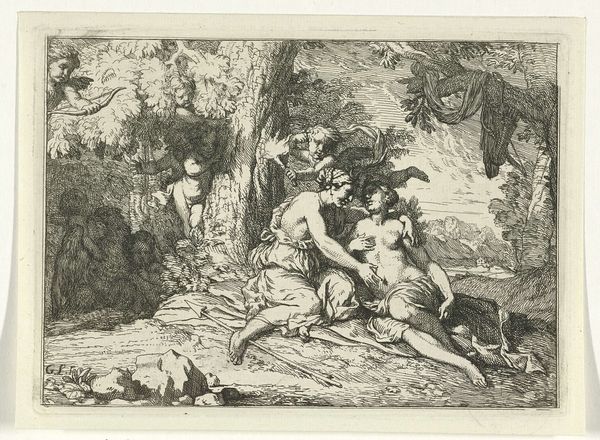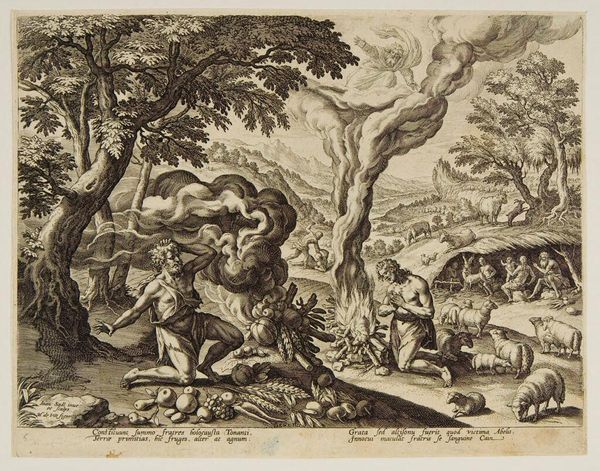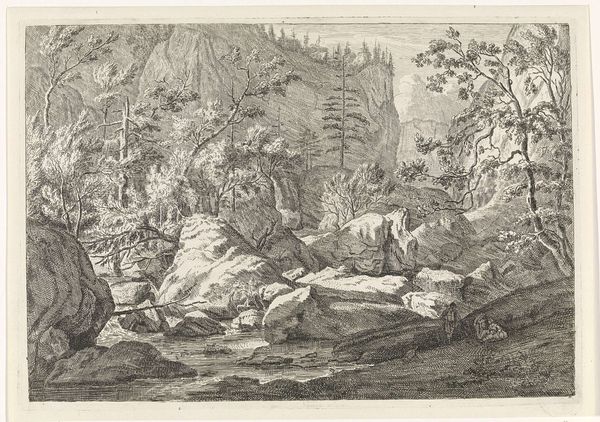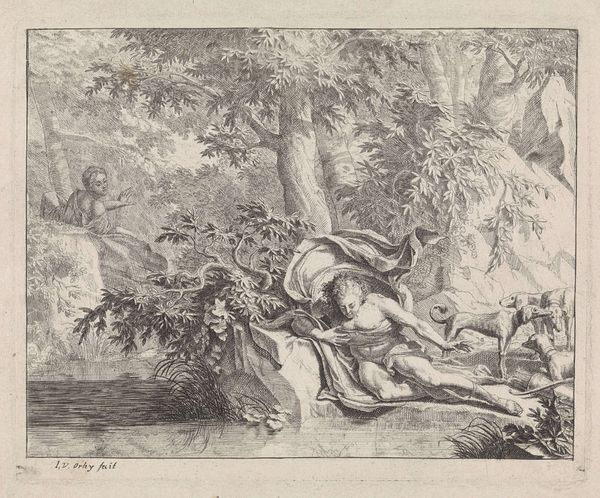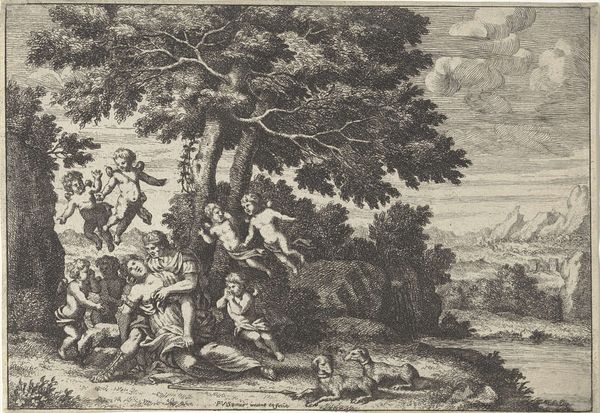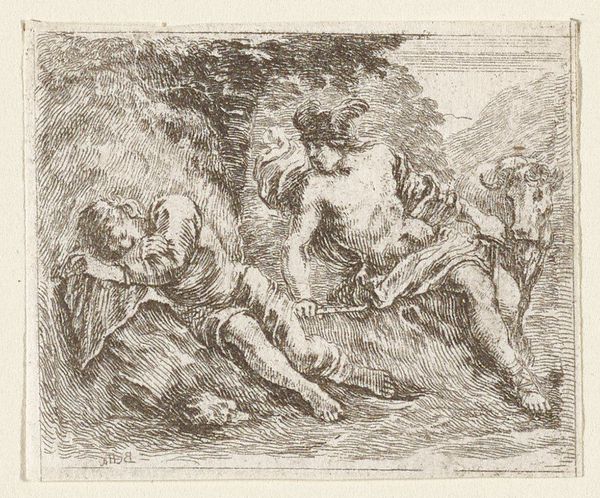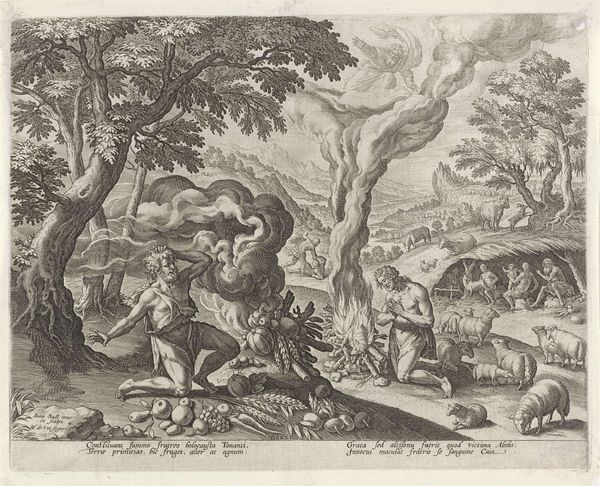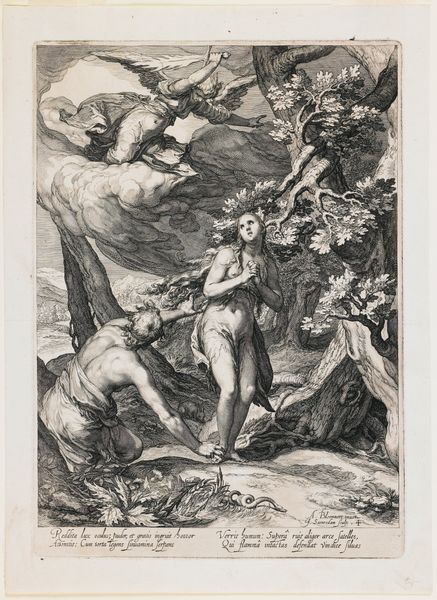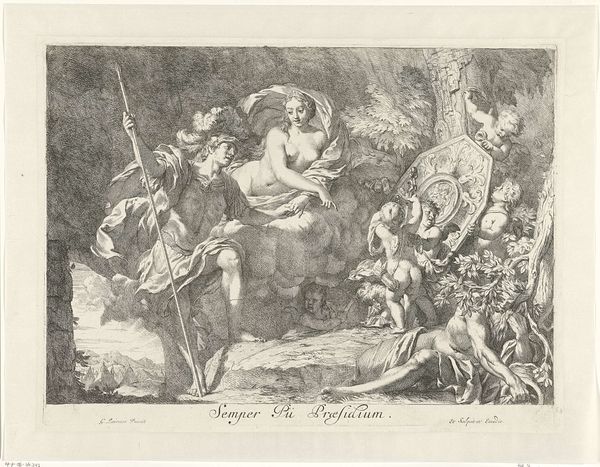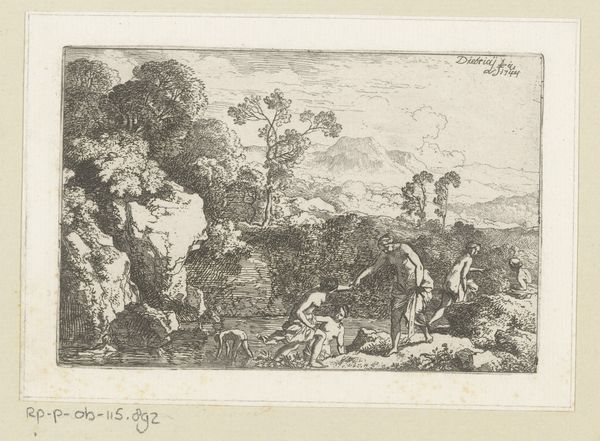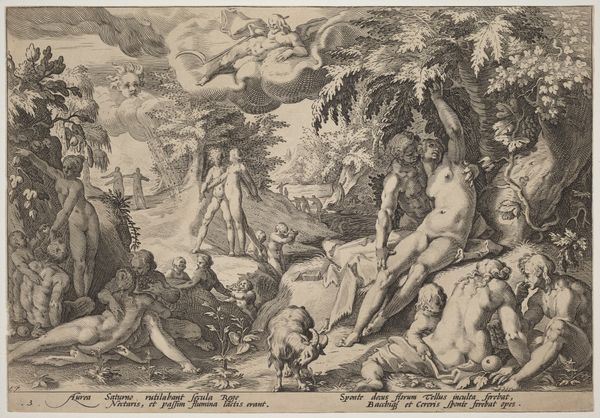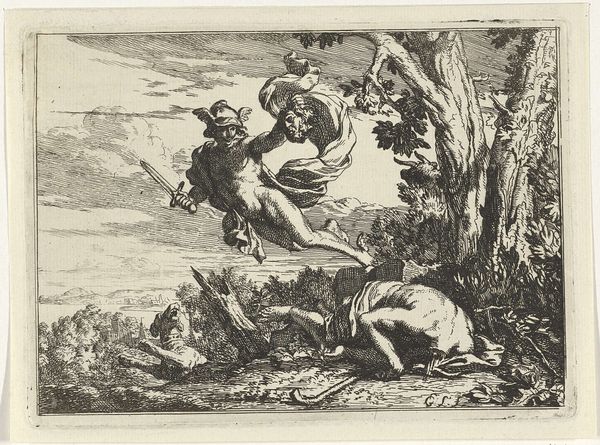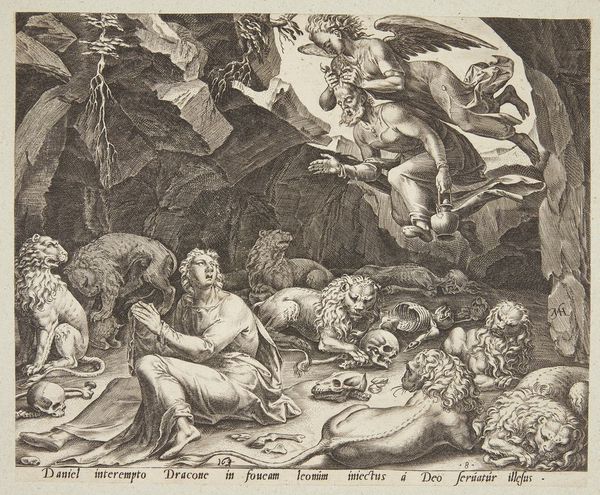
drawing, ink, pen, engraving
#
drawing
#
allegory
#
baroque
#
pen drawing
#
landscape
#
figuration
#
ink
#
pen
#
engraving
Dimensions: height 111 mm, width 154 mm
Copyright: Rijks Museum: Open Domain
Curator: The somber mood really leaps out in this pen drawing from Gerard de Lairesse, titled "Mercurius Speelt Argus in Slaap" circa 1670. What catches your eye? Editor: It’s incredibly heavy, isn’t it? Oppressive, almost. The shading seems to suffocate the scene despite its pastoral subject. Given the timeframe, I wonder what anxieties de Lairesse and his contemporaries were grappling with that manifest so powerfully here. Curator: Note how he employs tight, controlled lines to create depth and texture, a testament to his mastery of engraving. Consider the allegorical elements typical of the Baroque—Mercury's flute is both an instrument of music and a tool of deception. The formal elegance is quite calculated. Editor: Right, Mercury isn't just entertaining; he's actively pacifying, disempowering Argus, who we understand to be an agent of patriarchal control here, his many eyes representing surveillance. It reminds me of contemporary debates around digital privacy, the cost of vigilance in a security state. Curator: Interesting parallel! But observe how de Lairesse's classical composition draws our eyes through distinct planes. Argus sits wearily with his dog on the left, counterposed against the distant landscape revealed on the right behind Mercury. It achieves formal balance while advancing the narrative arc. Editor: Perhaps this "balance" also subtly reinforces power dynamics? Mercury, representing cunning and transition, dictates the visual and symbolic terms of the piece. It asks questions about resistance under systems designed to lull us into complacency, no? And where do animals fit in that hierarchy? Curator: I can certainly appreciate that social read. But when I focus solely on its formal properties, on line and form, this engraving functions effectively as a microcosm of classical landscape—with precisely rendered details creating both balance and depth. Editor: Well, in my reading, its power derives precisely from its ambivalence, reflecting an uneasy tension between classical ideals and real-world oppressions. Aesthetically brilliant but also politically charged. Curator: An engagement, either way, which gives us much to consider.
Comments
No comments
Be the first to comment and join the conversation on the ultimate creative platform.
